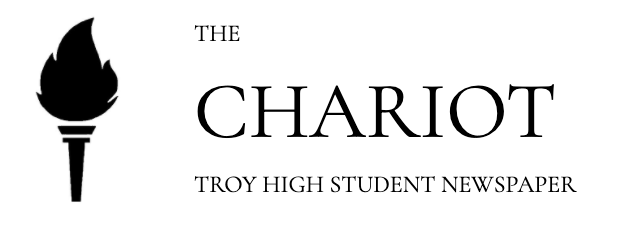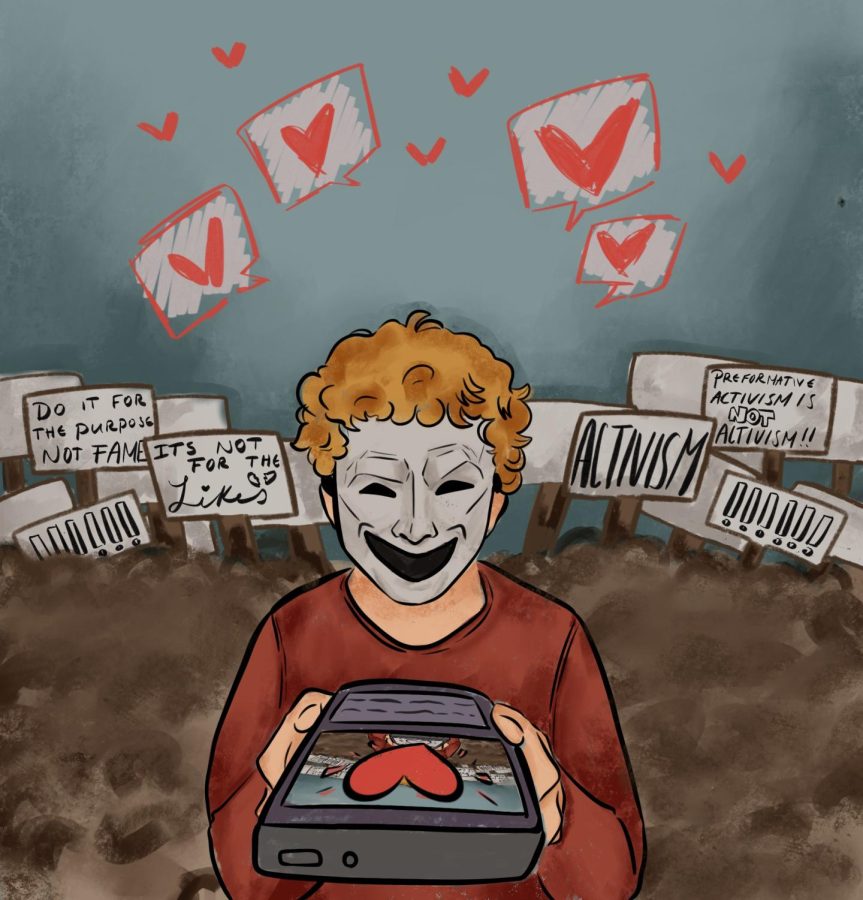Put the Act Back in Activism
A dive into performative activism and its harmful effects.
Performative activism is a form of “activism,” usually on social media, where a person will post something relating to a particular social or political movement with the intent of gaining praise from their peers, rather than actually displaying their devotion for a movement.
The term performative activism was popularized in 2020 when many celebrities were accused of using activism surrounding the Black Lives Matter movement to gain positive social media clout.
When asked whether social media helps popularize performative activism, AP Government teacher Ryan Werenka said, “Social media has definitely helped to promote performative activism because when people are in search of clout or likes and clicks on things it’s a pretty easy way to get them if they do some sort of performative activism or throw a hashtag on it. It’s a good way to get noticed.”
Today, almost everyone is on social media and many are trying to become some kind of an influencer. With the ability for almost anyone to gain a level of notoriety, people are held to a higher standard of appearing to be an “activist.” With recognized “correct” opinions, celebrities and influencers often post simply to stick with the trend.
Maintaining the image as an “activist” has become an almost integral part of social media, but is it really activism if no action is being taken? The Oxford Dictionary’s definition of activism is, “the policy or action of using vigorous campaigning to bring about political or social change.”
Movements would never get off of the ground with no action, but the pressure to appear like an activist causes it to blow up, which then fades into the background and is rarely spoken about or acted on afterwards.
When asked if there is something we should be doing to stop activism from dwindling, junior Mburu Karimi, a participant in local activist efforts, said, “Stop activism from being seen as a trend. I think if activism was categorized as more of an action then people who would like to participate in activism would continue to do that action for an extended period of time. Whereas if activism is categorized by putting something on your story or posting about it then it’s very easy to just stop posting.”
The rapid fading of certain causes was seen especially in activism surrounding the war in Ukraine. When the war started, many people expressed their support for Ukraine through posting on their social media. For example, people would change their profile picture to that of the Ukrainian flag or repost a white box on their Instagram story that stated, “Repost this if you support Ukraine (I see who skips).”
Sadly, many people posted just to show that they held the “right opinion” and then never posted again, causing the movement’s support to quickly disappear.
“The war is still continuing, people [Ukrainians] are still suffering, but people have moved on with their lives.” Junior Michael Kostinsky, who is Ukrainian, said after being asked about his thoughts on the way activism for Ukraine has dwindled.
What does changing profile pictures to a flag or reposting a resharable statement really do to help people who are affected in Ukraine? It could be argued that these things create awareness, but ultimately the awareness created is minimal. If someone is unaware of what is happening in Ukraine, seeing a flag on someone’s profile isn’t going to educate them about the war that’s being fought. Repostable messages that promote peer pressure just causes activism to be further pushed as a trend, where people feel the need to repost certain opinions to stay in the good graces of their peers. They likely don’t care or take the time to read what they’re posting, they just post to avoid possible judgment.
When people were posting in support of Ukraine, they often promoted organizations that were more harmful than good. Some notable examples are Instagram posts asking for donations for the Ukrainian military.
One of the groups that was commonly reposted was called Azov. There is a plethora of problems with Azov, but one of the major ones is that Azov uses Nazi symbolism and recruits Neo-Nazis into its ranks. By promoting these organizations, it in turn promotes their viewpoint. Sharing a common viewpoint doesn’t mean that their harmful views can be excused.
To properly support people in Ukraine, it is best to donate to organizations that help the citizens, rather than the military. War is not a black and white issue, and oftentimes both sides cause irreversible damage to our world and the people in it. It is more important to protect the innocent people affected by war than to support a side from personal political beliefs.
Effective activism requires proper research, and proper research into specific groups is essential.
There is much more to effective activism, outside of just doing proper research. When prompted about his thoughts on effective activism Karimi stated, “Effective activism or the most helpful activism would be… being on the streets and protesting or donating.”
In order for change to occur, taking action is necessary. Giving money allows for groups to have funding to take action. Giving money might be out of reach, but protesting is free. Taking action will make an impact.
Your donation will support the student journalists of Troy High School - MI. Your contribution will allow us to print our work, purchase equipment and cover our annual website hosting costs.


